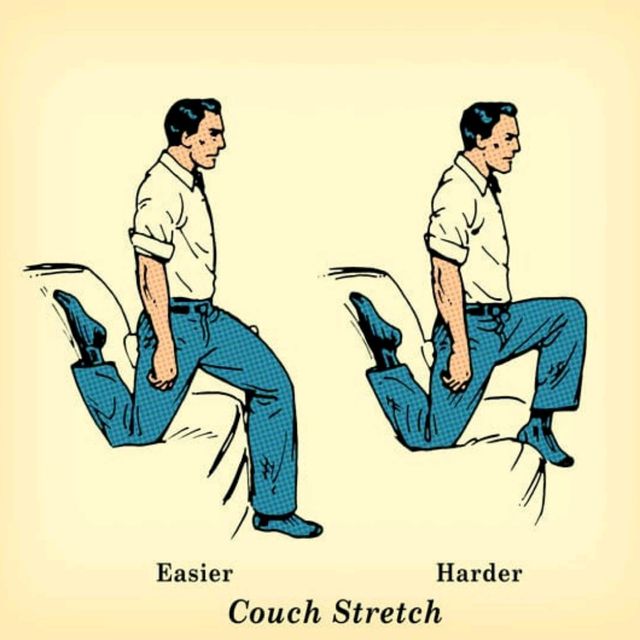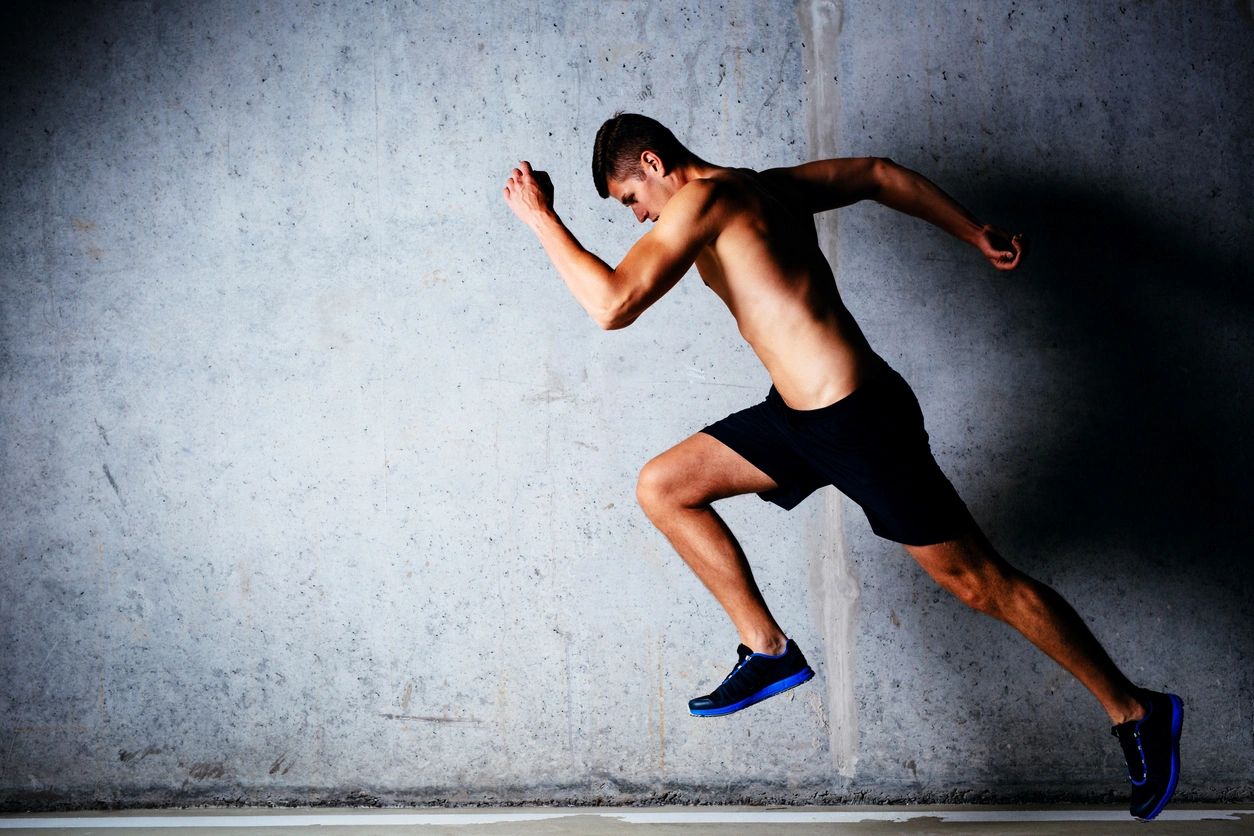If you’ve ever followed a warm-up routine, chances are you’ve stretched—whether it’s holding a long stretch before a big run or moving in a more dynamic manner before heading into a game. But not all stretching is created equal, and research is showing that how you stretch may have a big impact on how well you perform.
In the fitness world, two popular methods of stretching are static stretching (SS) and dynamic stretching (DS). Both have their benefits but depending on your goals and the type of activity you’re about to do, one may be better suited for you than the other.
My Bias
As usual, I want to go over my own thinking before diving into what my research came across. I’m a movement fanatic. I believe that having a library of high-quality movement patterns programmed into your nervous system will largely get rid of the need for stretching. If a muscle gets “tight”, it is because of a specific behavior. Maybe how you sit at work, if you have a wallet in the same back pocket repetitively, or you lean on the same leg while standing around. Your nervous system is constantly learning you and trying to help you do whatever it is you’re doing.
What does “tight” mean?
When a muscle is tight, usually it’s referring to a high degree of autonomic muscle tone. This means that without your control, a muscle is slightly contracting on its own. This is due to motor programming. Motor programming is the way your nervous system builds maps to make it easier for your body to navigate this world through various movements with a minimal amount of your help. This is important because without you changing the behavior that is causing the muscle tone, you can stretch until you’re blue in the face, the same muscles are just going to get “tight” again shortly after.
So if you can continually expose your muscles to end ranges of motion through loaded movements, those movements become your motor programming and not the other behaviors that you may view as bad like too much sitting in the same position, sleeping in a twisted position, or having bad posture when walking around.
For this reason, I don’t stretch very much, and instead focus on moving as much as possible. Instead, I try to move as much as possible.
The caveat I will include, is that as my performance goes up and my lifting/running schedule becomes more demanding I start to incorporate dynamic stretches to prepare my joints for those ranges of motion during performance. Really if you think about it though, I’m still just moving.
With that out of the way, let’s get into it.
Static Stretching: A Potential Performance Blocker?
Static stretching is the kind most people are familiar with—think bending down to touch your toes and holding it for 30 seconds. While static stretching is great for increasing flexibility, studies have found that it may not be the best option right before an activity that requires power or speed. In fact, a study from 2016 entitled, ‘Acute effects of muscle stretching on physical performance, range of motion, and injury incidence in healthy active individuals: a systematic review’ shows that SS can reduce athletic performance by about 3.7% if done right before exercise. The longer the stretch (over 60 seconds), the greater the negative impact.
Why is that? In simple terms, when you hold a static stretch, your muscles get relaxed and less “ready” for fast, explosive actions. You’re essentially telling your muscles to slow down, which can be the opposite of what you want in a high-intensity sport. Additionally, static stretching reduces muscle stiffness, which may sound good, but it actually makes your muscles less responsive when you need to sprint, jump, or lift heavy weights.

That said, static stretching does have its place. It’s highly effective for improving flexibility and can be a great part of your cool-down routine after a workout or on rest days when improving range of motion is the goal. Just be cautious about using it as a warm-up if you’re about to hit the field or the gym for an intense workout.
Dynamic Stretching: Prepping Your Body to Move
On the other side of the spectrum is dynamic stretching—where movement is key. Dynamic stretching involves controlled, repetitive movements that take your muscles and joints through a full range of motion. Usually it will look similar to a static stretch, but the individual doesn’t hold it nearly as long. Say 3-5 seconds. Research has found that dynamic stretching can actually boost performance. The same study from above, Behm et al. (2016) found that DS improves performance by about 1.3%, and other studies show it increases leg extension power (Yamaguchi & Ishii, 2005) and agility (Chatzopoulos et al., 2014).
Unlike static stretching, DS revs up your muscles, making them more responsive and ready for action. It increases blood flow, raises muscle temperature, and engages your nervous system. Imagine your body as a car engine—static stretching is like letting the engine sit idle, while dynamic stretching is like revving the engine before hitting the gas.
Another benefit? Dynamic stretching mimics the movements you’re about to do and because you’re constantly moving, will help warm up those exact muscles, making it easier to transition to full effort when the game or race starts.
The Science of Why Dynamic Stretching Works
Okay, we won’t dive too deep into the science, but here’s the gist: Dynamic stretching gets your body moving in ways that are functional. It doesn’t just stretch your muscles—it activates them. This means you’re telling your muscles to be ready to contract quickly and efficiently, which is critical for sports that require speed, power, and agility. For instance, this study from Sekir et al. (2009) found that DS increased muscle strength and electrical activity in the muscles, whereas SS did the opposite.
Your muscles have antagonistic relationships with one another meaning, as one muscle contracts, another becomes inhibited or relaxes. Another way of thinking is as one muscle contracts to move a limb, the other muscle releases SOME contraction and controls that movement. It’s such a fascinating thing about the human body that we don’t even have to control.
This mechanism lends itself to benefiting a dynamic stretch in an interesting way. Each repetition of a movement performed creates what’s called a motor pattern which is essentially a map of how you move. A static stretch lacks this repetitive nature while a dynamic stretch may involve sometimes 10+ repetitions of the same movement.
Let’s take a couch stretch for example. This stretch is a great stretch for targeting the hip flexors and the quadriceps. Those muscles have antagonistic relationship with the glutes, meaning as the glutes contract, the hip flexors should release. During a couch stretch, you’re teaching your nervous system how to use the glutes to create length in the front of the hips. Because of the repetition, this behavior is reinforced in a more powerful way that in a static stretch.

If you’d like to learn more about movement, motor patterning, strength training, etc, I’ve written another blog post entitled Functional Strength Training 101, that you can find here!
Does That Mean Static Stretching Is Bad?
Not at all. Static stretching is still valuable, especially when it comes to increasing flexibility and range of motion. It’s also useful for recovery, particularly after workouts, when your muscles are warm and need to relax. Static stretching can help reduce muscle tightness and promote long-term flexibility.
However, as a pre-game or pre-workout warm-up, dynamic stretching seems to be the winner if your goal is to perform at your best.
The Bottom Line: Tailor Your Stretching to Your Activity
When deciding between static and dynamic stretching, think about what you’re about to do. If you’re heading into a strength or power workout, sprinting, or playing a fast-paced sport, dynamic stretching is the way to go. It’ll wake up your muscles and prepare your body for the demands ahead. Save static stretching for your cool-down or for a dedicated flexibility session.
Here’s a quick takeaway:
- Before high-intensity exercise? Go for dynamic stretching to boost your performance.
- After your workout or on rest days? Use static stretching to improve flexibility and relax your muscles.
With the right approach, stretching can be a game-changer, helping you stay injury-free and get the most out of your performance. So next time you hit the field, court, or gym, take a moment to consider how you’re stretching—and make sure you’re setting your body up for success.




1 thought on “Static vs Dynamic Stretching”
Very interesting! I liked this blog! Thank you very much!
Comments are closed.